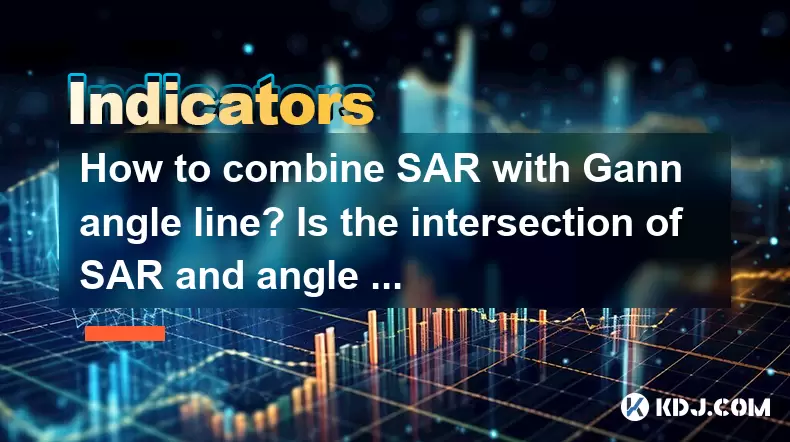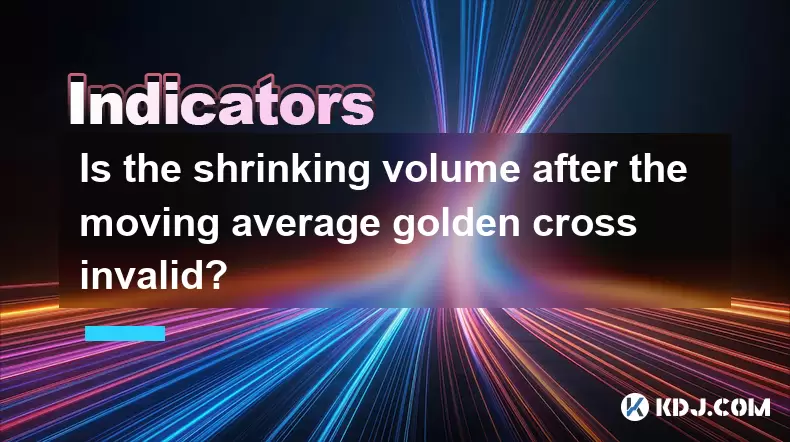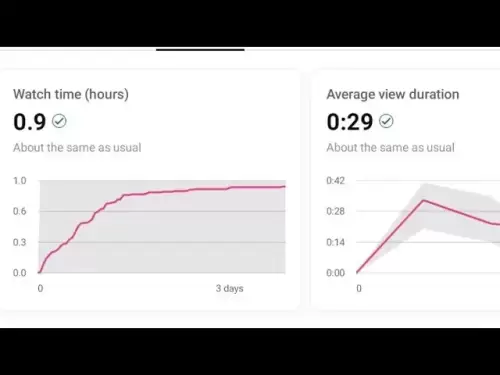-
 Bitcoin
Bitcoin $103,456.1111
0.49% -
 Ethereum
Ethereum $2,414.9631
0.02% -
 Tether USDt
Tether USDt $1.0006
0.05% -
 XRP
XRP $2.1083
0.24% -
 BNB
BNB $634.8760
-0.76% -
 Solana
Solana $139.8437
1.94% -
 USDC
USDC $0.9998
-0.01% -
 TRON
TRON $0.2737
0.97% -
 Dogecoin
Dogecoin $0.1602
0.20% -
 Cardano
Cardano $0.5737
1.08% -
 Hyperliquid
Hyperliquid $32.9779
-2.54% -
 Bitcoin Cash
Bitcoin Cash $474.8886
-1.80% -
 Sui
Sui $2.6272
-1.99% -
 Chainlink
Chainlink $12.4878
0.14% -
 UNUS SED LEO
UNUS SED LEO $8.9234
0.35% -
 Stellar
Stellar $0.2411
-0.18% -
 Avalanche
Avalanche $17.0274
-0.70% -
 Toncoin
Toncoin $2.8936
-1.11% -
 Shiba Inu
Shiba Inu $0.0...01112
-0.58% -
 Litecoin
Litecoin $82.6982
1.33% -
 Hedera
Hedera $0.1423
-0.05% -
 Monero
Monero $314.8455
3.26% -
 Ethena USDe
Ethena USDe $1.0006
0.01% -
 Polkadot
Polkadot $3.4043
1.14% -
 Dai
Dai $0.9999
0.01% -
 Bitget Token
Bitget Token $4.2848
-0.13% -
 Uniswap
Uniswap $6.8748
-5.45% -
 Pepe
Pepe $0.0...09661
0.52% -
 Pi
Pi $0.5359
1.19% -
 Aave
Aave $242.9168
-1.03%
How to combine SAR with Gann angle line? Is the intersection of SAR and angle line effective?
Parabolic SAR and Gann Angle Lines can help crypto traders predict trends; their intersection signals potential reversals, enhancing trading decisions.
May 27, 2025 at 09:22 pm

Introduction to SAR and Gann Angle Lines
Technical analysis in the cryptocurrency market often involves the use of various indicators and tools to predict future price movements. Two popular tools among traders are the Parabolic SAR (Stop and Reverse) and Gann Angle Lines. The Parabolic SAR is a momentum indicator used to determine potential reversals in the price direction of an asset, while Gann Angle Lines are used to identify key levels of support and resistance based on geometric angles. Combining these two tools can provide traders with a more comprehensive analysis of market trends.
Understanding Parabolic SAR
The Parabolic SAR is a technical indicator that appears as a series of dots on a chart, either above or below the price, depending on the direction of the trend. When the dots are below the price, it indicates an uptrend, and when they are above the price, it signals a downtrend. The key feature of the Parabolic SAR is that it accelerates with the trend, meaning the dots move closer to the price as the trend continues, suggesting that a potential reversal may be imminent.
Understanding Gann Angle Lines
Gann Angle Lines, developed by W.D. Gann, are based on the principle that prices move in predictable patterns. These lines are drawn at specific angles on a chart, typically at 1x1, 1x2, 1x3, 2x1, and 3x1 angles. The 1x1 angle, for example, represents a 45-degree angle and is considered the most significant, indicating a balance between time and price movement. Gann believed that these angles could help identify potential support and resistance levels, as well as predict future price movements.
Combining SAR with Gann Angle Lines
To combine the Parabolic SAR with Gann Angle Lines, traders can follow these steps:
Identify the Trend Using Parabolic SAR: First, use the Parabolic SAR to determine the current trend. If the dots are below the price, the trend is upward, and if the dots are above the price, the trend is downward.
Draw Gann Angle Lines: Next, draw the Gann Angle Lines on the chart. Start by identifying a significant high or low point on the chart and draw the lines from that point at the specified angles. For example, if you are using a 1x1 angle, draw a line that moves one unit of price for every one unit of time.
Observe the Intersection: Pay close attention to the points where the Parabolic SAR dots intersect with the Gann Angle Lines. These intersections can signal potential reversal points or confirm the strength of the current trend.
The Effectiveness of the Intersection
The intersection of the Parabolic SAR and Gann Angle Lines can be an effective signal for traders. When the Parabolic SAR dots cross a Gann Angle Line, it can indicate a significant change in the trend. For example, if the dots are below the price and they cross a downward-sloping Gann Angle Line, it may signal a potential reversal to a downtrend. Conversely, if the dots are above the price and they cross an upward-sloping Gann Angle Line, it may indicate a potential reversal to an uptrend.
Practical Application in Cryptocurrency Trading
In the context of cryptocurrency trading, combining the Parabolic SAR with Gann Angle Lines can be particularly useful due to the high volatility and rapid price movements often seen in this market. For instance, if a trader is analyzing Bitcoin (BTC) and sees that the Parabolic SAR dots are below the price and they cross a 1x1 Gann Angle Line, it could suggest a strong bullish trend and a potential buying opportunity. Similarly, if the dots are above the price and they cross a 1x1 Gann Angle Line, it might indicate a strong bearish trend and a potential selling opportunity.
Using Multiple Timeframes
To enhance the effectiveness of this combined approach, traders can use multiple timeframes. For example, they can apply the Parabolic SAR and Gann Angle Lines on both a daily and hourly chart. If the signals align across different timeframes, it can provide a stronger confirmation of the trend and potential reversal points.
Daily Chart Analysis: Start by analyzing the daily chart to identify the overall trend using the Parabolic SAR. Draw the Gann Angle Lines from significant highs and lows on the daily chart.
Hourly Chart Analysis: Next, move to the hourly chart and repeat the process. If the Parabolic SAR dots on the hourly chart intersect with the Gann Angle Lines in the same direction as the daily chart, it can provide a more reliable signal.
Real-World Example
Consider a scenario where a trader is analyzing the price of Ethereum (ETH). On the daily chart, the Parabolic SAR dots are below the price, indicating an uptrend. The trader draws a 1x1 Gann Angle Line from a recent low point and observes that the Parabolic SAR dots are approaching this line. On the hourly chart, the same pattern is observed, with the Parabolic SAR dots intersecting the 1x1 Gann Angle Line. This alignment across different timeframes could suggest a strong bullish trend and a potential buying opportunity for the trader.
Adjusting Parameters
It's important for traders to understand that the Parabolic SAR and Gann Angle Lines can be adjusted to suit different market conditions and trading styles. The Parabolic SAR has a parameter called the acceleration factor, which can be tweaked to make the indicator more or less sensitive to price movements. Similarly, the angles used for the Gann Angle Lines can be adjusted based on the trader's analysis of the market.
Adjusting the Parabolic SAR: To adjust the Parabolic SAR, traders can change the acceleration factor. A higher acceleration factor will make the dots move closer to the price more quickly, while a lower factor will make them move more slowly.
Adjusting Gann Angle Lines: Traders can experiment with different angles to find the ones that best fit the current market conditions. For example, in a highly volatile market, steeper angles might be more effective, while in a less volatile market, shallower angles might be more appropriate.
Frequently Asked Questions
Q1: Can the Parabolic SAR and Gann Angle Lines be used on any cryptocurrency?
Yes, the Parabolic SAR and Gann Angle Lines can be applied to any cryptocurrency. However, the effectiveness of these tools may vary depending on the specific characteristics of the cryptocurrency, such as its volatility and trading volume.
Q2: How often should I adjust the parameters of the Parabolic SAR and Gann Angle Lines?
The frequency of adjusting the parameters depends on the trader's strategy and the market conditions. Some traders may adjust the parameters daily, while others may do so weekly or even monthly. It's important to monitor the market and adjust the parameters as needed to maintain the effectiveness of the indicators.
Q3: Are there any other indicators that can be used in conjunction with the Parabolic SAR and Gann Angle Lines?
Yes, traders can use other indicators such as the Relative Strength Index (RSI), Moving Averages, and Bollinger Bands in conjunction with the Parabolic SAR and Gann Angle Lines to gain a more comprehensive view of the market. Combining multiple indicators can help confirm signals and reduce the risk of false positives.
Q4: How can I learn to draw Gann Angle Lines accurately?
To draw Gann Angle Lines accurately, you can use trading platforms that offer built-in tools for drawing these lines. Practice on historical data to understand how different angles interact with price movements. Additionally, many online resources and courses provide detailed tutorials on drawing and interpreting Gann Angle Lines.
Disclaimer:info@kdj.com
The information provided is not trading advice. kdj.com does not assume any responsibility for any investments made based on the information provided in this article. Cryptocurrencies are highly volatile and it is highly recommended that you invest with caution after thorough research!
If you believe that the content used on this website infringes your copyright, please contact us immediately (info@kdj.com) and we will delete it promptly.
- Ruvi AI: The Audited Token Poised to Outshine Shiba Inu
- 2025-06-22 10:25:12
- Dypians, DeFi, and Sei Network: A Deep Dive into the Latest Trends
- 2025-06-22 10:25:12
- Hacken Security Breach Highlights Risks Across Ethereum and BSC
- 2025-06-22 08:25:12
- SHIB Price, Forecasts, Timelines: Will Shiba Inu Ever Reach the 'One-Cent Dream'?
- 2025-06-22 08:25:12
- Avalanche vs. Ruvi AI: Why Smart Money's on This Audited Token
- 2025-06-22 08:45:12
- Bitcoin Demand on Pause: What's Next for the Crypto King?
- 2025-06-22 08:45:12
Related knowledge

Does the second surge in the RSI overbought zone induce more?
Jun 22,2025 at 08:35am
Understanding the RSI Overbought ZoneThe Relative Strength Index (RSI) is a momentum oscillator commonly used in technical analysis to measure the speed and change of price movements. It ranges from 0 to 100, with values above 70 typically considered overbought and values below 30 considered oversold. When the RSI enters the overbought zone for the firs...

Does the sudden contraction of ATR indicate the end of the trend?
Jun 20,2025 at 11:14pm
Understanding ATR and Its Role in Technical AnalysisThe Average True Range (ATR) is a technical indicator used to measure market volatility. Developed by J. Welles Wilder, ATR calculates the average range of price movement over a specified period, typically 14 periods. It does not indicate direction—only volatility. Traders use ATR to gauge how much an ...

Is it invalid if the DMI crosses but the ADX does not expand?
Jun 21,2025 at 09:35am
Understanding the DMI and ADX RelationshipIn technical analysis, the Directional Movement Index (DMI) consists of two lines: +DI (Positive Directional Indicator) and -DI (Negative Directional Indicator). These indicators are used to determine the direction of a trend. When +DI crosses above -DI, it is often interpreted as a bullish signal, while the opp...

How to filter false signals when the SAR indicator frequently flips?
Jun 21,2025 at 08:43pm
Understanding the SAR Indicator and Its BehaviorThe SAR (Stop and Reverse) indicator is a popular technical analysis tool used in cryptocurrency trading to identify potential reversals in price movement. It appears as a series of dots placed either above or below the price chart, signaling bullish or bearish trends. When the dots are below the price, it...

Is the trend continuation when the Williams indicator is oversold but there is no rebound?
Jun 20,2025 at 11:42pm
Understanding the Williams %R IndicatorThe Williams %R indicator, also known as the Williams Percent Range, is a momentum oscillator used in technical analysis to identify overbought and oversold levels in price movements. It typically ranges from 0 to -100, where values above -20 are considered overbought and values below -80 are considered oversold. T...

Is the shrinking volume after the moving average golden cross invalid?
Jun 22,2025 at 10:42am
Understanding the Moving Average Golden Cross in CryptocurrencyIn the world of cryptocurrency trading, technical indicators play a crucial role in decision-making. One such indicator is the moving average golden cross, which occurs when a short-term moving average crosses above a long-term moving average, typically signaling a bullish trend. This event ...

Does the second surge in the RSI overbought zone induce more?
Jun 22,2025 at 08:35am
Understanding the RSI Overbought ZoneThe Relative Strength Index (RSI) is a momentum oscillator commonly used in technical analysis to measure the speed and change of price movements. It ranges from 0 to 100, with values above 70 typically considered overbought and values below 30 considered oversold. When the RSI enters the overbought zone for the firs...

Does the sudden contraction of ATR indicate the end of the trend?
Jun 20,2025 at 11:14pm
Understanding ATR and Its Role in Technical AnalysisThe Average True Range (ATR) is a technical indicator used to measure market volatility. Developed by J. Welles Wilder, ATR calculates the average range of price movement over a specified period, typically 14 periods. It does not indicate direction—only volatility. Traders use ATR to gauge how much an ...

Is it invalid if the DMI crosses but the ADX does not expand?
Jun 21,2025 at 09:35am
Understanding the DMI and ADX RelationshipIn technical analysis, the Directional Movement Index (DMI) consists of two lines: +DI (Positive Directional Indicator) and -DI (Negative Directional Indicator). These indicators are used to determine the direction of a trend. When +DI crosses above -DI, it is often interpreted as a bullish signal, while the opp...

How to filter false signals when the SAR indicator frequently flips?
Jun 21,2025 at 08:43pm
Understanding the SAR Indicator and Its BehaviorThe SAR (Stop and Reverse) indicator is a popular technical analysis tool used in cryptocurrency trading to identify potential reversals in price movement. It appears as a series of dots placed either above or below the price chart, signaling bullish or bearish trends. When the dots are below the price, it...

Is the trend continuation when the Williams indicator is oversold but there is no rebound?
Jun 20,2025 at 11:42pm
Understanding the Williams %R IndicatorThe Williams %R indicator, also known as the Williams Percent Range, is a momentum oscillator used in technical analysis to identify overbought and oversold levels in price movements. It typically ranges from 0 to -100, where values above -20 are considered overbought and values below -80 are considered oversold. T...

Is the shrinking volume after the moving average golden cross invalid?
Jun 22,2025 at 10:42am
Understanding the Moving Average Golden Cross in CryptocurrencyIn the world of cryptocurrency trading, technical indicators play a crucial role in decision-making. One such indicator is the moving average golden cross, which occurs when a short-term moving average crosses above a long-term moving average, typically signaling a bullish trend. This event ...
See all articles
























































































